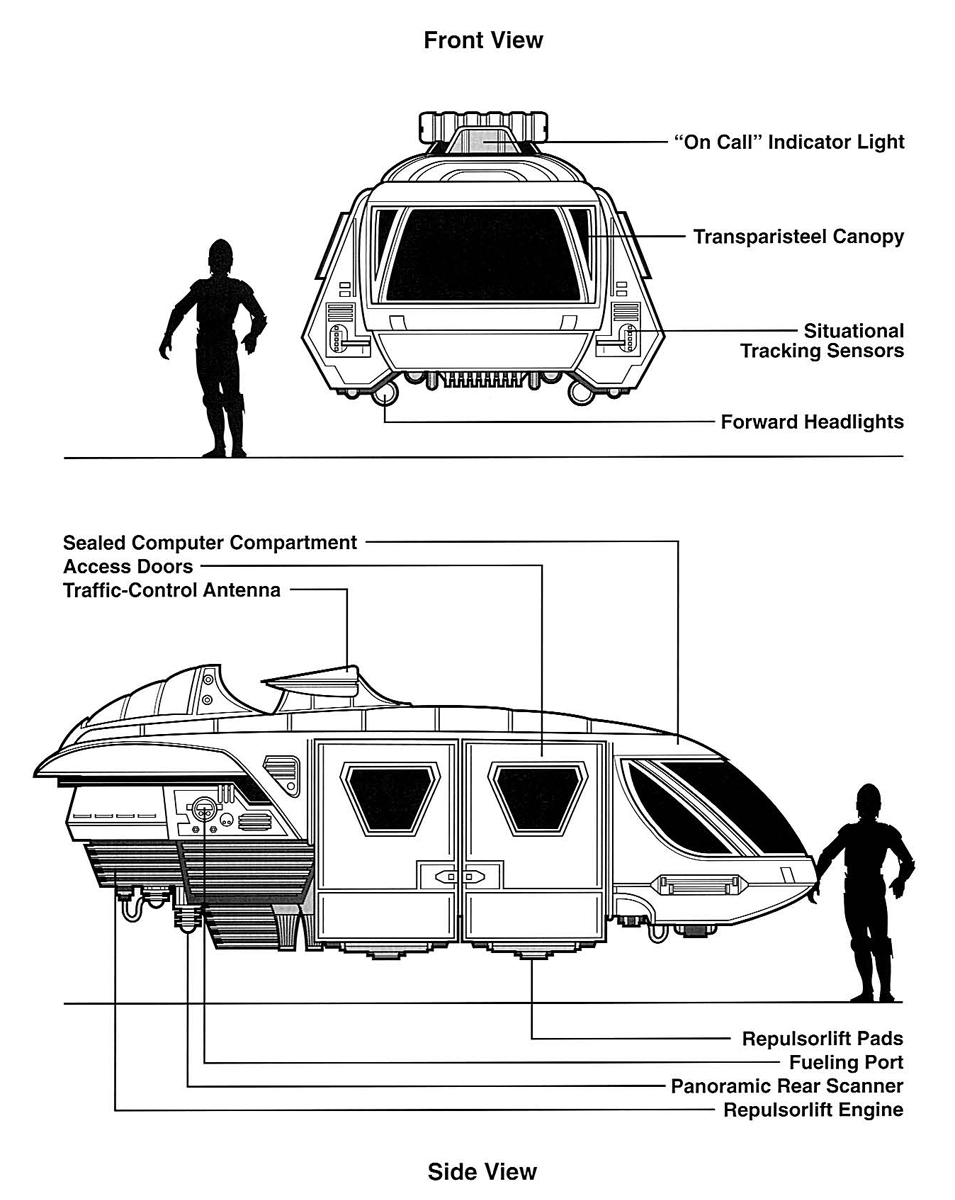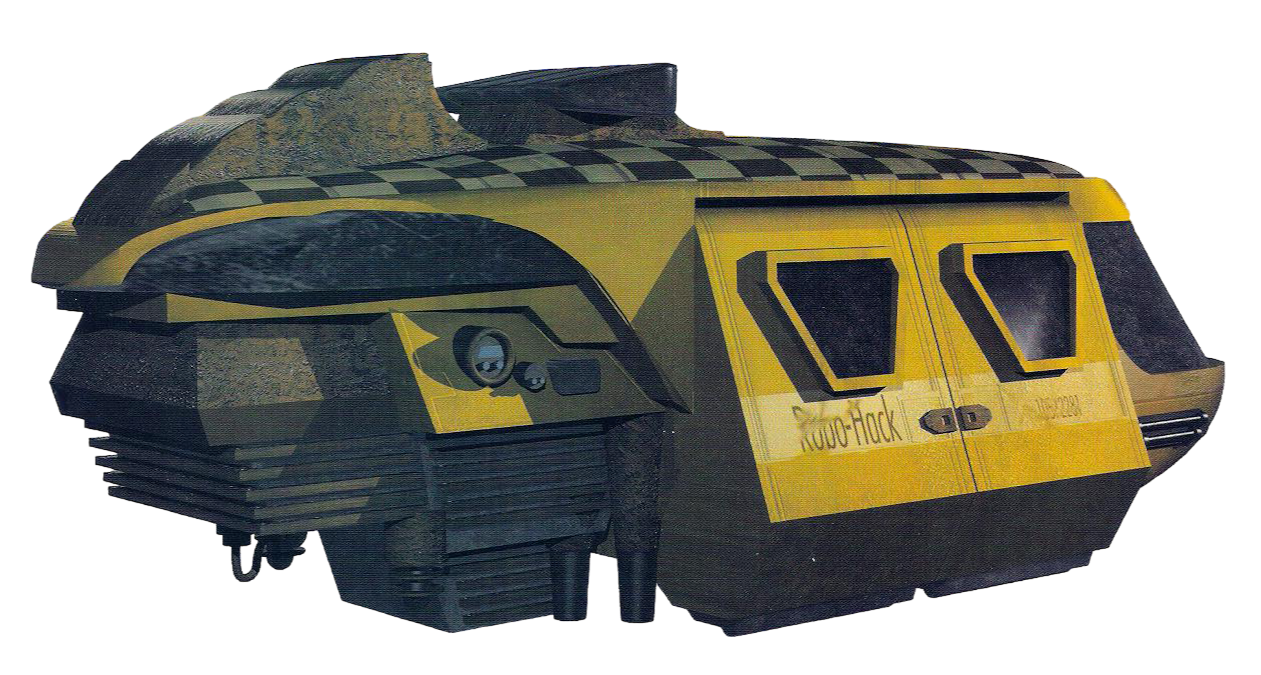Metrocab Robo-Hacks were modified passenger transports fitted with integrated droid modules. The Metrocab was a six meter long enclosed landspeeder which could transport up to four passengers and could attain speeds of up to 300 kilometers per hour. Accommodations consisted of backseats for the passengers, a pair of speakers playing a broadcast and a snuff-pot for disposing of used cigarras. As in many cases, Robo-Hacks often became worn and battered.

Robo-Hack schematics
When passengers entered a Robo-Hack, they announced their destination in the direction of the large auditory sensor in the front wall. It was also equipped with a vocoder if further clarification was required. This was usually the extent of the conversation since few Robo-Hacks had personality programming. Upon arrival at their destination, the passenger paid by slotting a voucher into the data port or placing local currency into a change slot. If a passenger tried to exit the craft without paying their fees, some variants would seal both their doors and transport the violator to the nearest security station or would keep the violator inside until they paid their fares.
The robo-hack's front compartment was sealed and contained the droid's cognitive module and performance circuitry. All Robo-Hacks were linked to the main database of local roads and alleyways and were also equipped with a Central Learning Chip (CLC) which gave them the ability to learn and remember shortcuts based on the time of day and regular traffic patterns. Robo-Hacks were also allowed to access municipal traffic control networks on most worlds for updates on weather conditions and accidents. Banks of sensors above its forward headlights provided situational tracking data for high-speed lane changing while a panoramic optical sensor in the back compartment served as a rear view mirror.

Rear view of a Robo-Hack
When they were first introduced centuries before 0 BBY, Robo-Hacks were often cornered and blown apart by petty thief gangs eager to get to the credits. In response, later versions were covered with armor plating designed to make them resistant to any form of small arms fire.
Since robo-hacks were more efficient than organic drivers and often cheaper to operate as well, they became a common sight on a wide range of worlds stretching from the Core Worlds to the Outer Rim. Some robo-hacks had also been known to take off-worlders on the longest route to and from their destination to earn more money then it usually would.
- A Guide to the Star Wars Universe
- Han Solo and the Corporate Sector Sourcebook
- "Cynabar's Droid Datalog" — Star Wars Adventure Journal 14
- The Far Orbit Project
- The Essential Guide to Droids
- Arms & Equipment Guide
- The Official Star Wars Fact File70
- The Official Star Wars Fact File85
- The New Essential Guide to Vehicles and Vessels
- The Complete Star Wars Encyclopedia